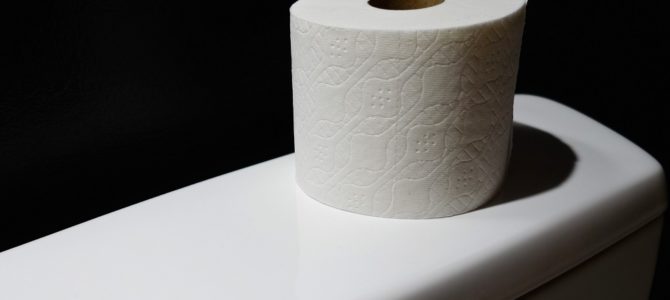
Fortune Magazine’s 2.2 million Twitter followers woke up Friday morning to a news story that seems unbelievable. According to the magazine, “The average American uses 3 rolls of toilet paper each week—and it’s devastating forests.” Not everyone has the same bathroom needs and habits, but most people’s reactions to the tweet were similar: that seems like a lot.

That sort of reaction by ordinary people ought to have convinced Fortune’s editors to fact-check the information. Instead, they took the figures disseminated by the Natural Resources Defense Council—an environmental advocacy group—and republished them nearly word-for-word, turning the magazine into a microphone for a special interest group.
Making Sense of Messy Figures
Clicking through to the story, we read that “The U.S. consumes more toilet paper than any other country, almost three rolls per person each week. And the brands they choose to use aren’t sustainable, with hardwood trees being pulped to create the soft toilet paper consumers want. Following the United States’ annual use of 141 rolls of toilet paper per capita is Germany with 134 rolls and the United Kingdom with 127. Japanese consumers average 91 rolls annually, while the Chinese average just 49.”
Leaving aside the comparisons to foreign nations—China has its own unique issues with toilet paper—let’s focus on that figure of 141 rolls per person per year. Taking it at face value, that works out to 2.71 rolls per American per week. So already we have some exaggeration in the Fortune story, but we could reasonably chalk that up to rounding off the number to make a more succinct headline.
Fortune links to the Natural Resources Defense Council (NRDC) Web page from which the claims are drawn. That study also notes the 141 rolls per person per year for Americans, and gives as its source a study conducted by Statista, a market research group. In their survey of the toilet paper industry, Statista also gives the 141 rolls figure, but for the first time in this footnote hunt, we receive a crucial bit of information: Statista informs readers that their figure assumes that one roll of toilet paper weighs 90 grams.
Looking deeper into their figures, we see that that sales of toilet paper in the United States were estimated at 12.72 kg per person per year. Dividing 12.72 kilograms by 90 grams gives us 141.33 rolls which rounds off to 141, matching the figure found throughout this chain of citations. So far, so good, but what about that 90 gram figure? Is that really how much a roll of toilet paper weighs?
Like most Americans, I have no idea what 90 grams is. But converting that to traditional measurements yields a figure of 3.17 ounces, or just about one-fifth of a pound. That sounds too light, and a quick Google search reveals why: according to an article on the website of the Massachusetts Institute of Technology, the average roll weighs half a pound, or 227 grams.
How to tell which figure is correct? I looked up toilet paper on Amazon and found this listing for 30 rolls of Scott bath tissue, a fairly common brand. Part of Amazon’s business model is knowing the size and weight of everything it ships. For this product, they give a shipping weight of 15.2 pounds. Divide that by 30 rolls, and you get almost exactly one half pound per roll, just as MIT says you should. (The extra 0.2 pounds is probably the plastic packaging.)
If we take the actual weight of a roll of toilet paper (227g, or 0.5 lbs.) and divide the 12.72 kg per person per year by that, it produces a yearly total of 56.04 rolls per year, or slightly more than one a week for each American. That is a lot more in line with what you would expect.
The Forest And the Trees
The math behind the NRDC’s claims is clearly wrong, but what about the other claims? Is our insatiable desire for toilet paper destroying the planet? Again, there’s more than a whiff of untruth here. As a Proctor and Gamble spokesman explained to Fortune:
100% of [P&G’s] wood fiber comes from responsibly managed forests, certified by third parties such as the Forest Stewardship Council. ‘Virgin fiber in tissue products is preferred by consumers, and ‘does the job’ much more efficiently,’ the Procter & Gamble spokesman told Fortune. ‘By using virgin fiber from responsibly managed forests, our products are more absorbent, so consumers can do more with less waste. Paper products made from recycled materials are less soft, less absorbent and lack the strength that products manufactured from virgin fibers can provide.’
The phrase “virgin fiber” suggests a beautiful sylvan glade being demolished and mashed up for pulp. The reality: wood chips, many of which are the leftovers after larger pieces of wood are taken from trees, are the main component in toilet paper. That’s part of the “responsibly managed forests” and “less waste” the P&G spokesperson mentioned. They are using a lumber waste product to make something productive, not grinding up two-by-fours, as even environmentalist outlets like the Mother Nature Network admit.
Furthermore, making toilet paper completely out of recycled material results in an inferior product. Recycled paper has shorter fibers, and the difference in fiber length means that the resulting paper is not as soft, as the Seattle Times noted in a 2009 article on the subject (the author of that piece does suggest that adding some recycled material would not noticeably affect the quality.) No one wants scratchy toilet paper, and the stuff they do make it out of is responsibly harvested and renewable, but that doesn’t stop the green fundamentalists from trying to make our lives worse.
Too Good To Check
An error like this gets into the world because people want to believe it. I sorted it out in 30 minutes of fact-checking, and anyone else could do the same. But the lure of a sensational story, especially one that lines up with the author’s view of humanity’s devastating environmental practices, made it too good to check.
For the NRDC and Fortune, the toilet paper story was just a way to push an environmental agenda that holds as an article of faith that we are a wasteful people. These figures get used as a springboard for a demand that we use more recycled paper and cut down fewer trees.
But modern forestry is a more sustainable industry that the NRDC would have us believe. No one is cutting down 200-year-old oaks for toilet tissue. And even if recycling paper for TP were economical, there is another problem: people don’t like it.
Last year, we saw a nationwide campaign for a ban on plastic drinking straws that turned out to be based on inaccurate figures generated in a nine-year-old’s science project. The NRDC now calls for regulation of toilet paper use based on similarly shoddy figures. As usual, this too-good-to-check story about the environment has turned out to be full of crap.









